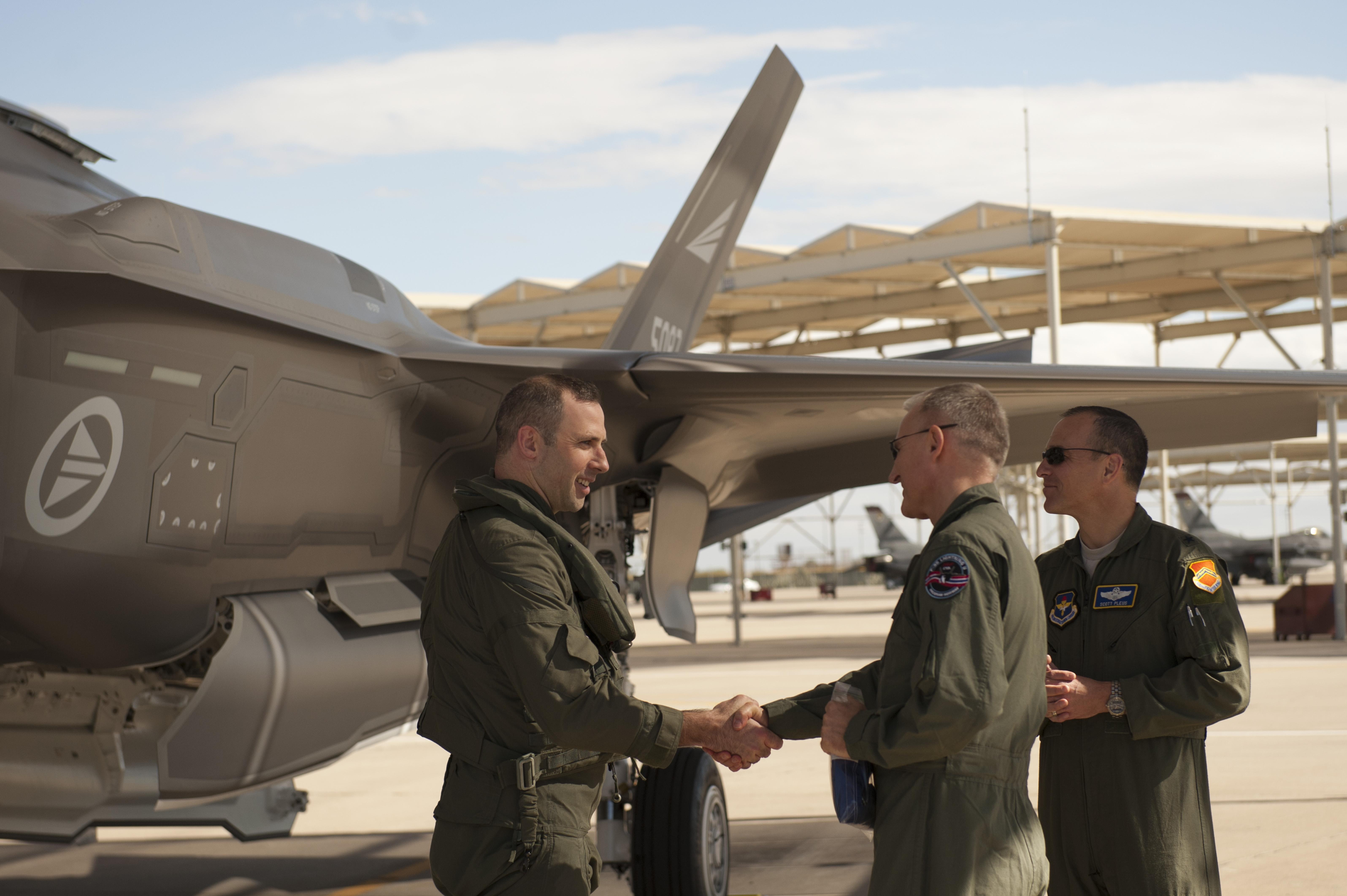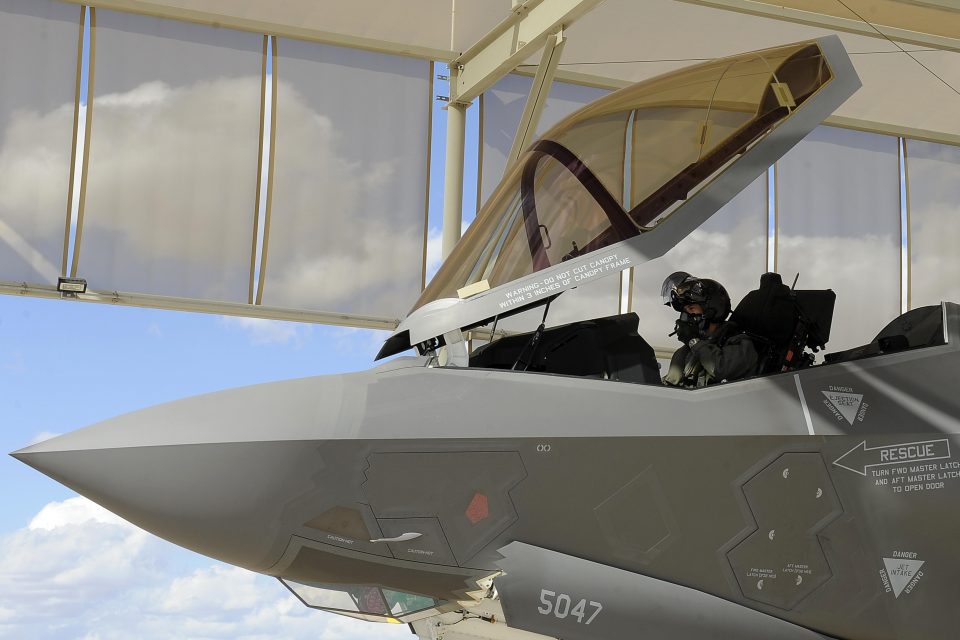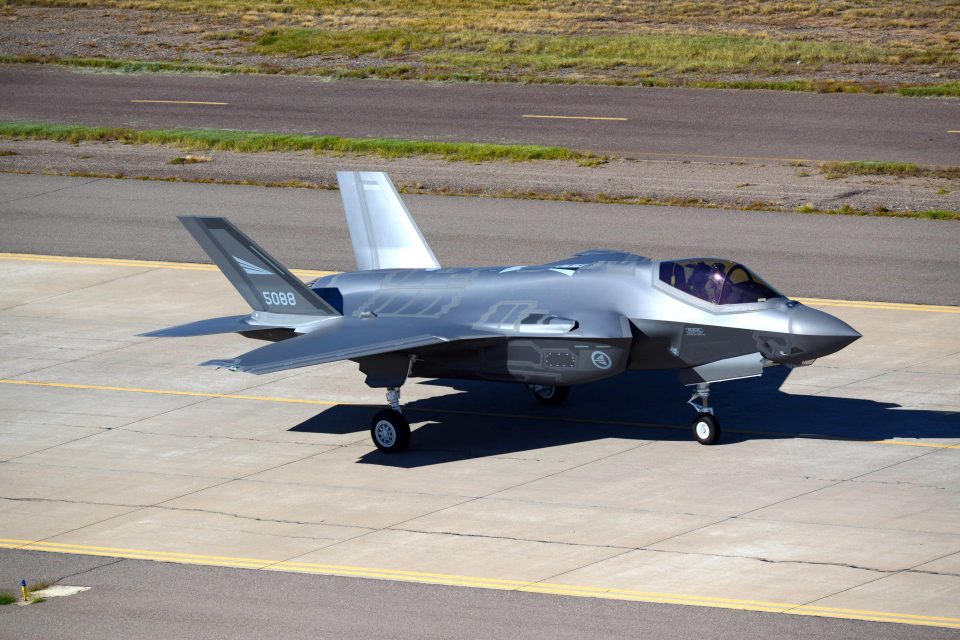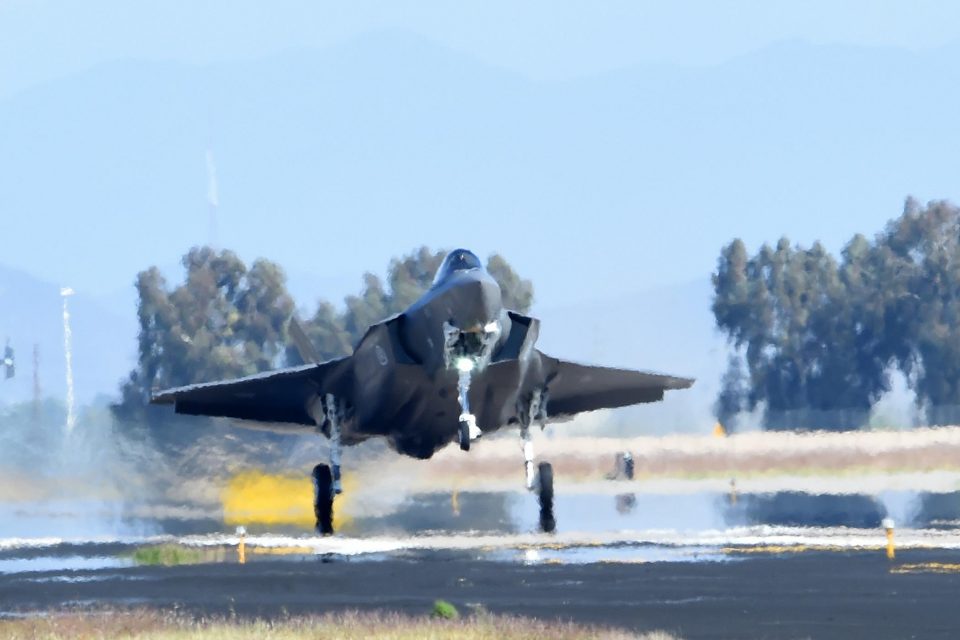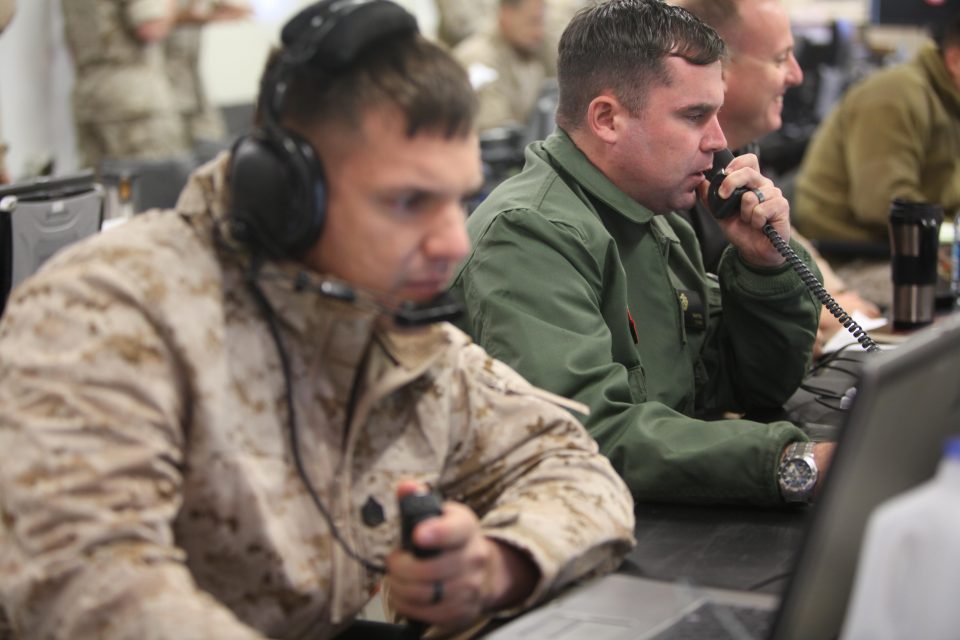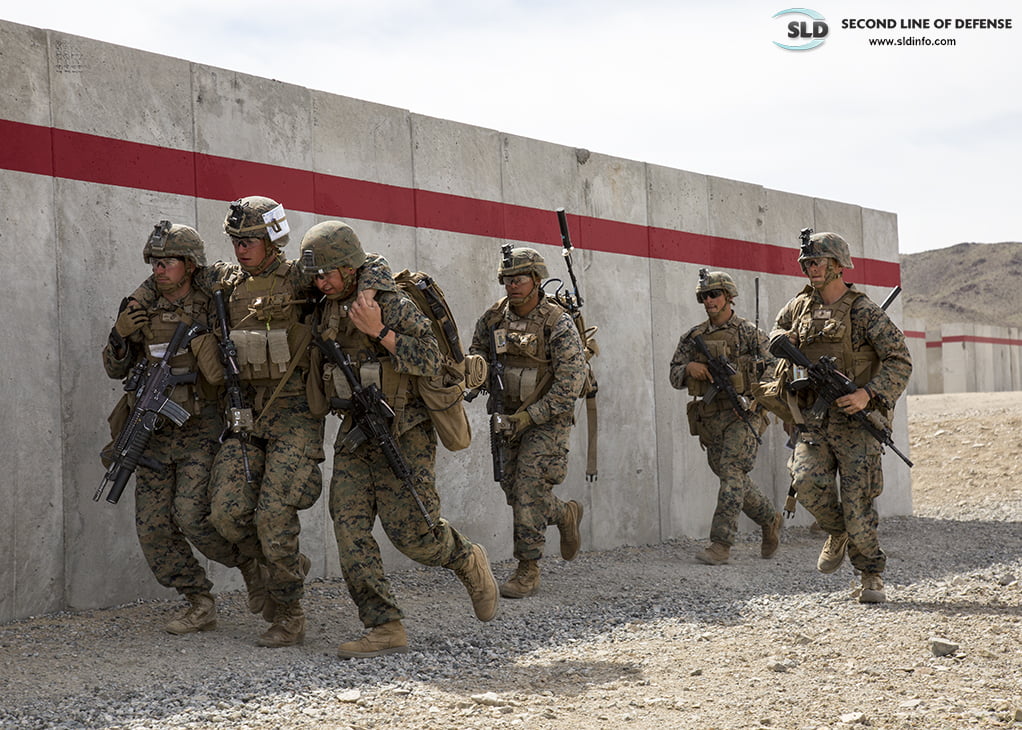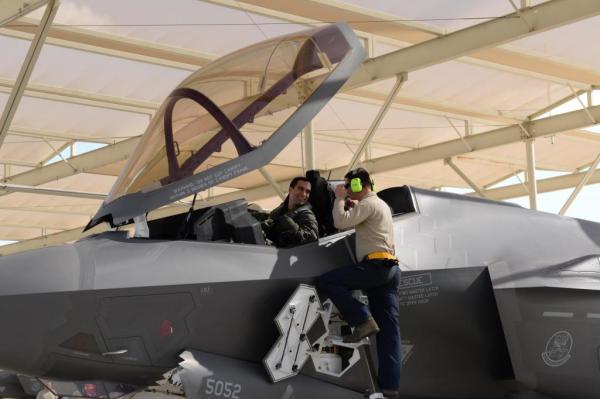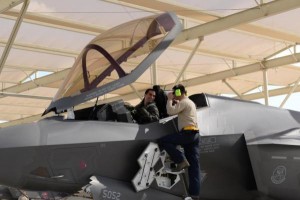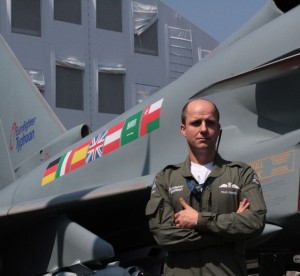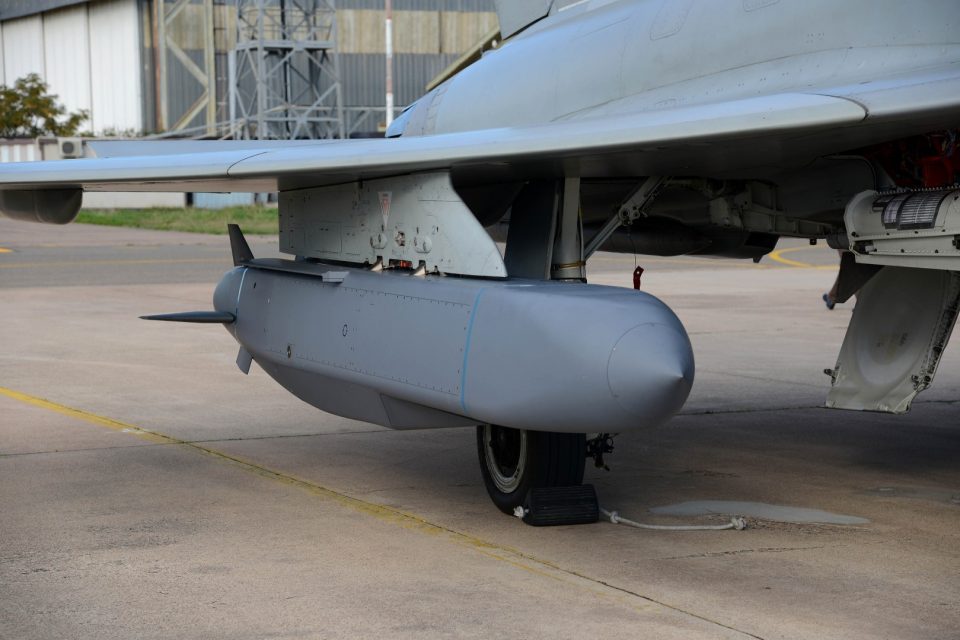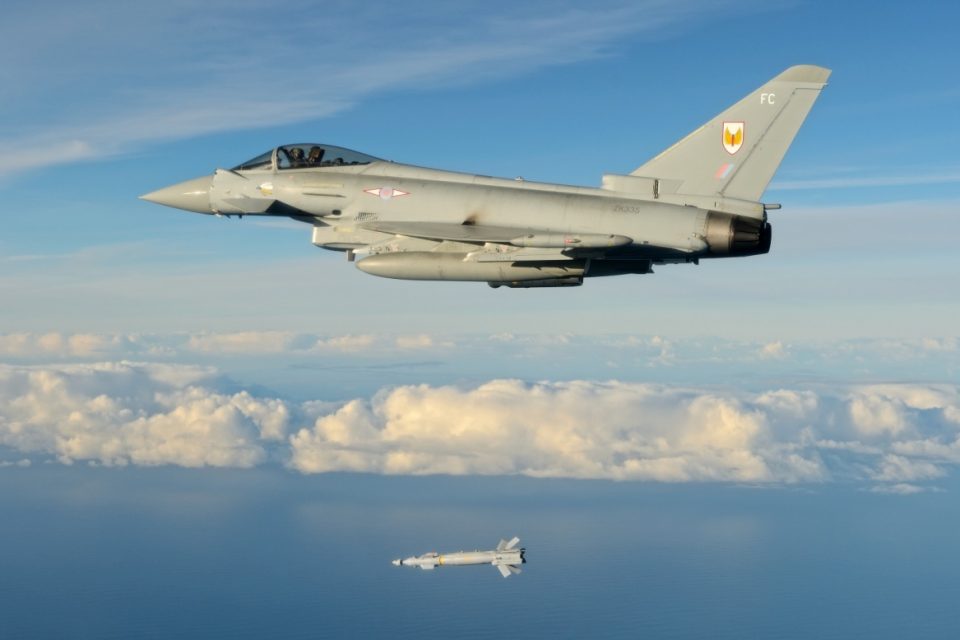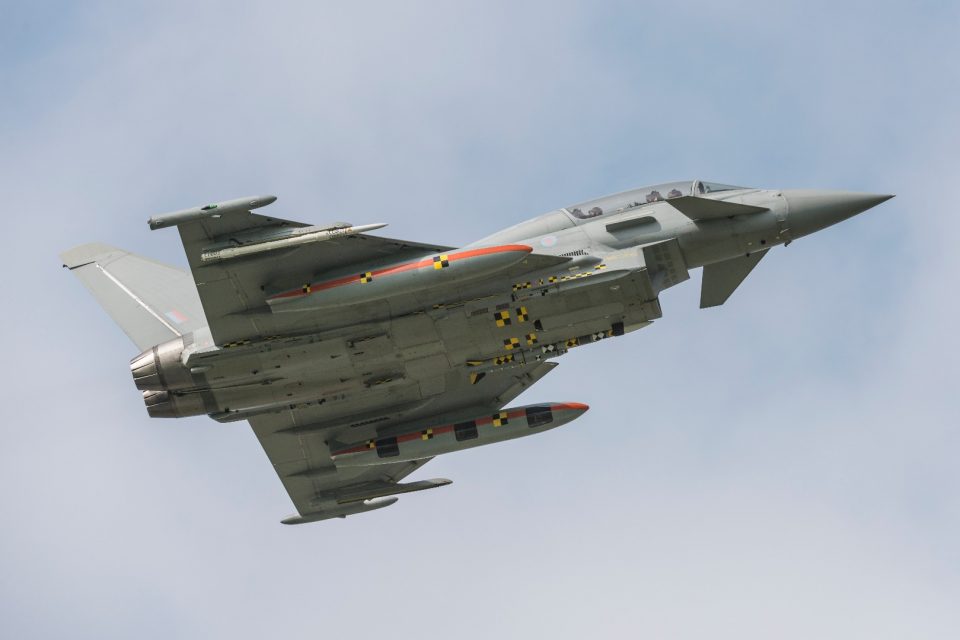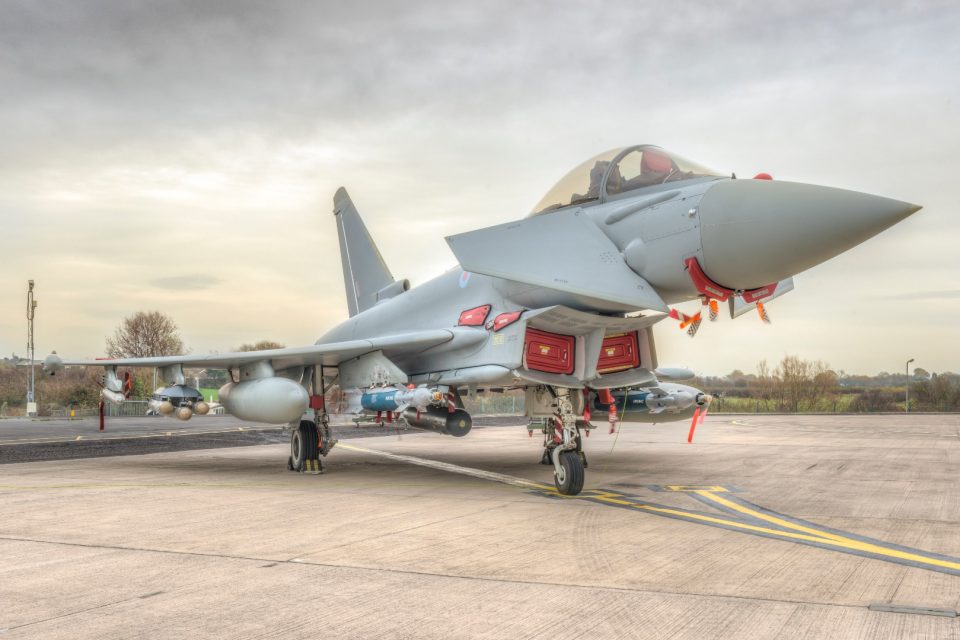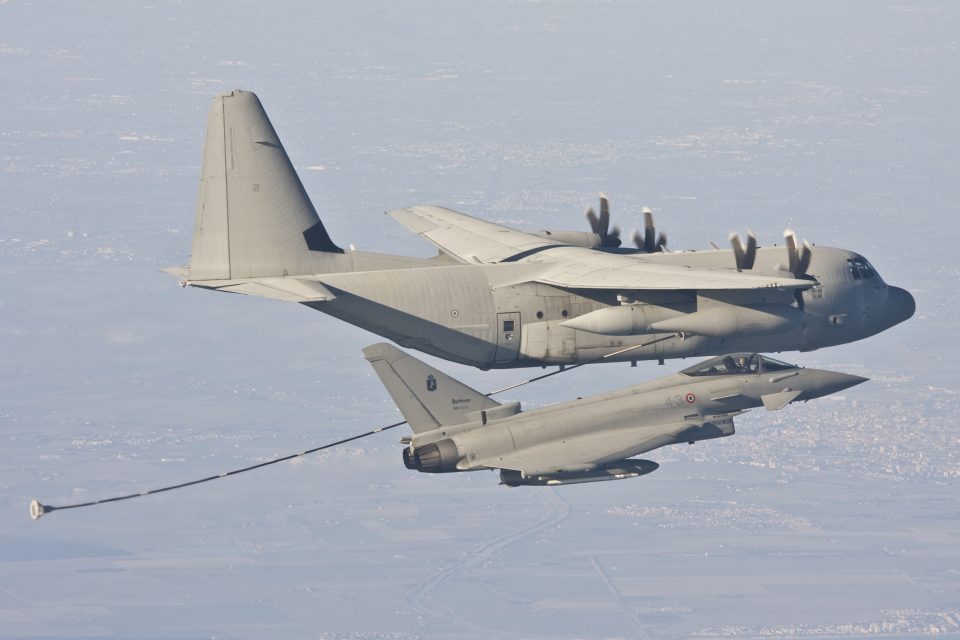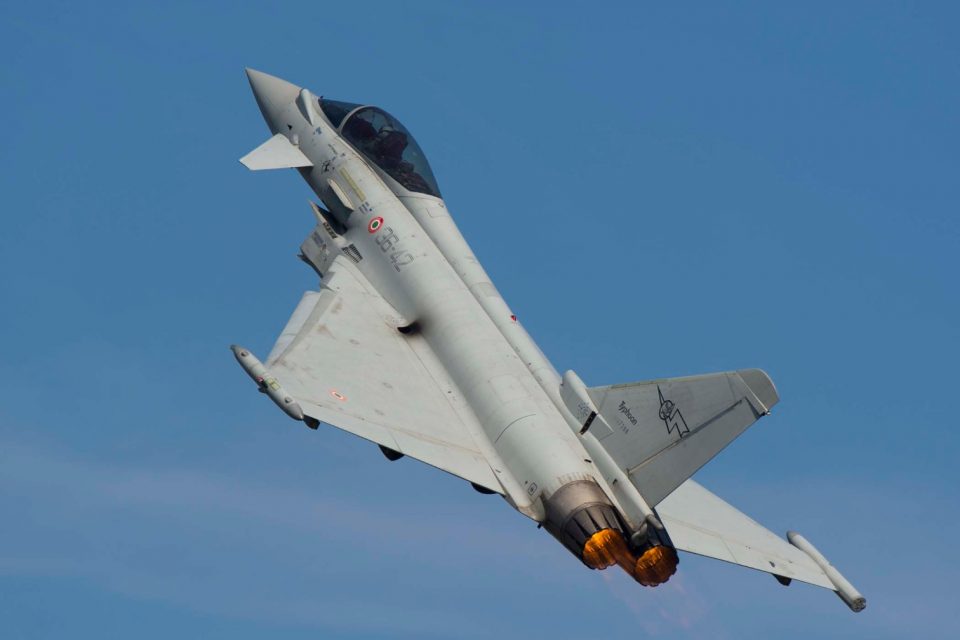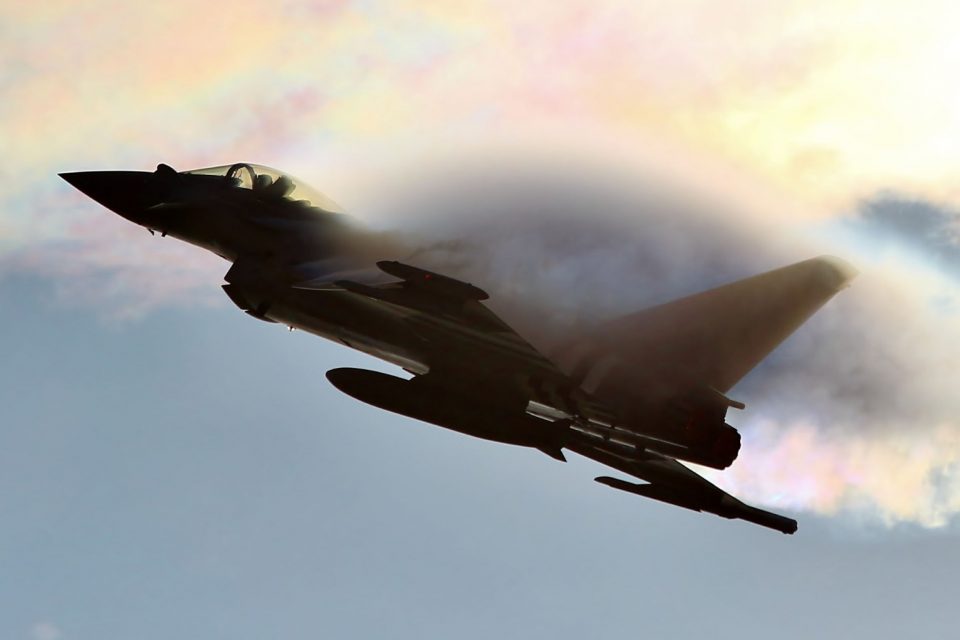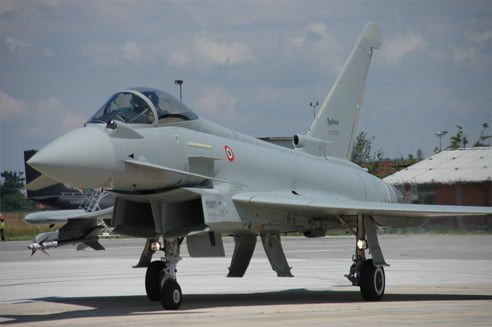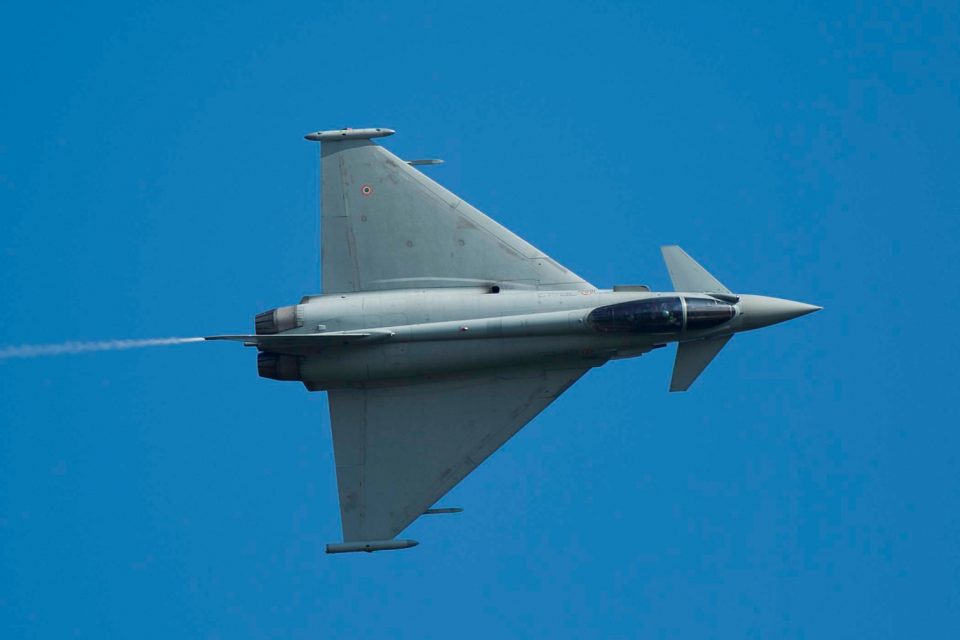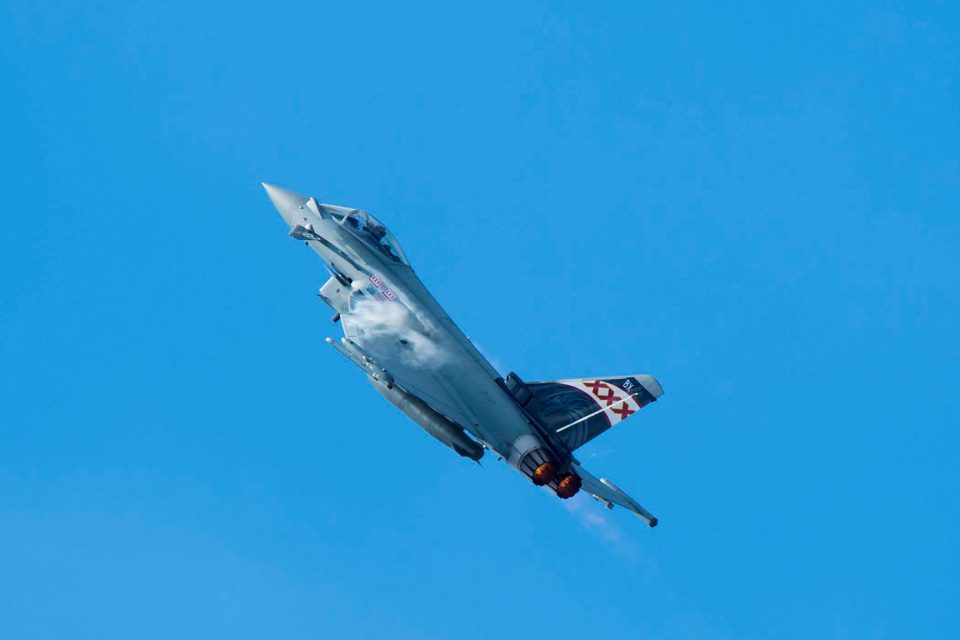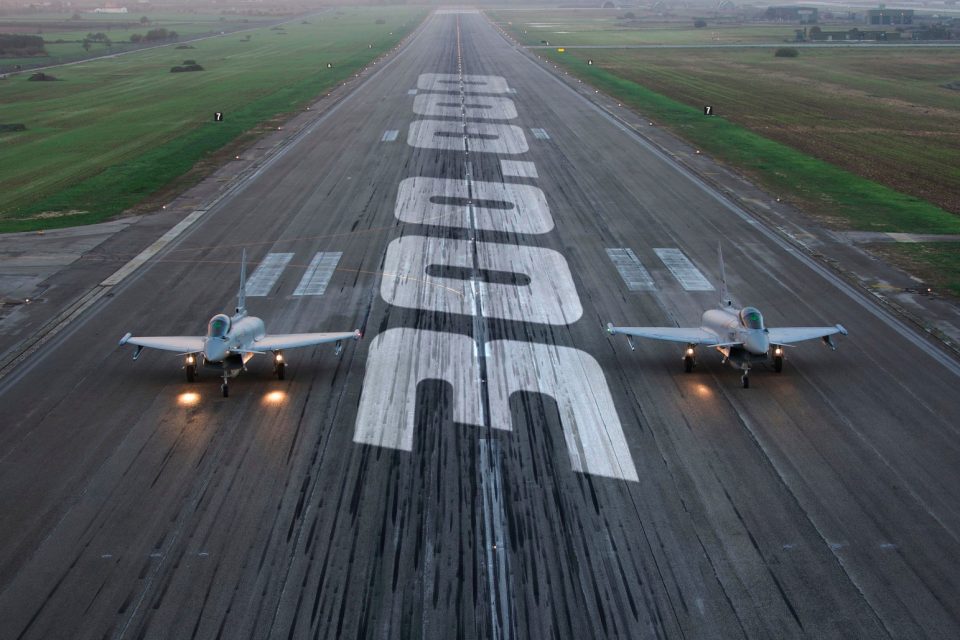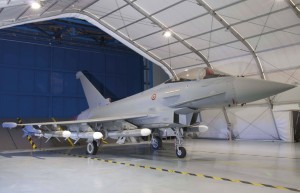2015-11-14 The first two Norwegian F-35 aircraft are seen arriving at Luke AFB, AZ and the first Royal Norwegian Air Force F-35 student pilot’s initial flight as well in the video below.
Norway is one of the F-35 partner nations currently training pilots at Luke AFB.
The two Norwegian F-35 jets arrived from the Lockheed Martin plant at Ft. Worth, TX and will join the 62nd Fighter Squadron which is training both Norwegian and Italian pilots in addition to US pilots.
Maj. Morten Hanche of the Royal Norwegian Air Force also did his initial F-35 flight and is the first Norwegian student to complete F-35 training at Luke AFB.
Both events took place on Nov. 10th, which is the birthday of the Royal Norwegian Air Force.
Norwegians at Luke AFB: First Norwegian F-35s Arrive from SldInfo.com on Vimeo.
Credit: 56th Fighter Wing Public Affairs
11/10/15
According to a piece by Senior Airman Grace Lee of the 56th Fighter Wing Public Affairs published on 11/10/15:
The first two Norwegian F-35s arrived today at Luke Air Force Base, Ariz. Shortly after, a Norwegian pilot flew the F-35 Lightning II for the first time today, in conjunction with the Royal Norwegian air force’s birthday.
The F-35 program took its first step forward integrating partner nations with the arrival of the first Australian F-35 Dec. 18, 2014, at Luke. Almost a year later the next big international step for the program came when two Italian pilots completed their first flight in an F-35 Nov. 5 here.
This marks the second international partner to have F-35s arrive for training at Luke.
“Today is a great day for the 62nd Fighter Squadron, the 56th Fighter Wing, and the U.S. and Norwegian air forces,” said Lt. Col. Gregory Frana, 62nd FS commander. “Since the 62nd FS stood up as an F-35 squadron back in June of 2015, we have been focused on training the world’s best F-35 pilots. Today, as we accept our first partner aircraft into the squadron, we are one step closer to fulfilling our mission of training the best F-35 pilots from around the world.”
The day was a result of the combined efforts of the U.S. and its Norwegian partners.
“Over the past few months we have been working closely with our Norwegian partners to ensure that we are ready to receive and fly the most technologically advanced aircraft the world has ever seen,” Frana said. “Today is the result of a monumental team effort, but the effort will not stop here. The effort will continue as the U.S. and our partners bring the F-35 to initial operational capability and utilize this amazing machine to strengthen alliances and defend our national interests.”
Similar to the partnership Norway had with the U.S. and other partner nations with the F-16, the F-35 partnership will make for an unstoppable force.
“When it comes to the partnership, we see a very good transfer from our experience with the F-16 to the F-35,” said Royal Norwegian air force Maj. Morten Hanche, 62nd FS training pilot. “Working with the same and some new partners, will allow us the same benefits. Also, it will allow us to easily integrate and operate together as one force. This is because we train together, we know each other and we keep it very similar.”
Eight other nations will be training alongside the U.S. on the new airframe. Other partner nations that will be joining the U.S., Norway and Australia in the F-35 training program here will be Turkey, Italy, and the Netherlands, in addition to Foreign Military Sales countries Japan, Korea and Israel.
“When the F-35 deploys in the future, it will be alongside our Norwegian partners,” said Brig. Gen. Scott Pleus, 56th FW commander. “The relationships built here in the West Valley will be critical to both our nations as we move forward. Building partnership activities is priceless as the Air Force reinforces long-established bonds and cultivates new friendships through training opportunities, exercises and military-to-military events.”
Luke currently has 32 F-35s and by 2024, Luke is scheduled to have six fighter squadrons and 144 F-35s. Norway will have seven F-35s stationed at Luke.
Recently, two Italian pilots flew a USAF and a RAAF F-35 as part of their training at Luke AFB.
The USAF is learning to fly its most advanced jet AT PRECISELY THE SAME TIME as key allies. Rather than simply learning to fly WITH the USAF on different jets, the Italians and other F-35 nations are shaping common training, tactics and procedures for a global fleet FROM THE GROUND UP.
As one of the Italian pilots put it:
Question: You flew an Australian jet yesterday.
You do not normally work with Australian pilots, but you will get to know them from the ground up as well as you train at Luke and fly each other’s jets.
What is your sense of this dynamic?
Answer: The young guys will grow up in a very advanced warfighting and multi-national environment because of this program.
They will be used to not just working together from time to time in an exercise, but will build in common tactics from the ground up and help each other innovate as well.
The impact of the joint training from the ground up was highlighted by Group Captain Glen Beck, Director of the Air Combat Transition Office in the Royal Australian Air Force.
Question: You are working critical mass not just from a pilot perspective but from the air systems perspective.
Is that how to look at it?
Group Captain Beck: It is. Not everyone has enough jets at the beginning but by being part of a coalition critical mass they have access to more than simply their own national jets.
By putting the various national participants in a common pool you can accelerate learning and shape more effective solutions from the beginning.
And we are seeing a clear acceleration of this process, something not easily recognized by those not participating in the program.
And with the growing numbers of F-35 pilots and maintainers, you will bring fifth generation into the main stream. Rather than simply being a niche capability, it will become the mainstay for change for the air combat force.
It is going to become more of a day-to-day experience; it is going to become less “special” and more normal.
A lot of people don’t realize how much momentum we have in the program and we are rapidly achieving critical mass in the program.
This will be the premier fighter in the 21st century; several nations will be using it; and sharing their combat experiences, and building an evolving capability over time. In my opinion, a lot of people are yet to think through what the impact of this will mean.
What follows is the Norwegian judgment about receiving their first F-35 in late September 2015.
On Tuesday 22 September, the first Norwegian F-35 was officially presented in Texas. This marks the beginning of a new era for the Norwegian Armed Forces.
The aircraft was rolled out in front of some 300 prominent guests in Lockheed Martin’s aircraft final finishes hall in Fort Worth, Texas. Among the guests were Norwegian Minister of Defence, Ine Eriksen Søreide, and Chief of Defence, Admiral Haakon Bruun-Hanssen.
“This is a joyful day for us all. This shows that we are modernising our defence, and that is an important part of our activity,” said the Admiral.
ADVANCED TECHNOLOGY
Norway has decided to buy up to 52 new F-35A multirole fighters within 2025. The jets will replace today’s F-16 fighters gradually from 2019. The F-35s, however, are more than just a replacement for today’s Norwegian fighters.
“This jet’s combat capability is significantly better than the F-16’s. The advanced stealth technology increases its survivability and makes it easier to get close to an opponent without being detected. Also, the weapon systems have a significantly longer range than we have on the F-16s,” Bruun-Hanssen said.
NORWEGIAN MISSILE
In her speech, Norwegian Minister of Defence Ine Eriksen Søreide, pointed out the long-lasting and close relationship between Norway and the USA.
Several Norwegian companies have also contributed to the development and construction of the F-35s. Among them is Kongsberg Defence & Aerospace, which has developed the Joint Strike Missile in cooperation with the Norwegian Armed Forces. The missile will be integrated in the Norwegian F-35s.
STAYS IN THE USA
During the ceremony, the internationally renowned Norwegian trumpeter Ole Edvard Antonsen played his song “Vidda” (the mountain plateau in English). Antonsen wrote the song after being a passenger on board an F-16.
The building of Norway’s first F-35 started in September 2013. After some final testing it will fly to Luke Air Force Base in Arizona in November. Norway’s second F-35 is soon to be completed, and in 2016, Norway’s next two jets will be completed. The first four Norwegian jets will all be based at Luke, where the training and education of Norwegian F-35 pilots will be carried out.
A VITAL CAPACITY
The first Norwegian F-35 is scheduled to land in Norway in 2017, a milestone that the Chief of Defence is looking very much forward to:
“Absolutely. The F-35 is one of the most important platforms in tomorrow’s Norwegian defence.
We build most of our defence around the F-35s, and all the capacities in this jet,” said the Admiral.
The photos in the slideshow highlight the arrival of the Norwegian F-35 jets at Luke AFB.
The first photo shows the second Norwegian F-35 Lightning II touches down at Luke Air Force Base, Ariz., Nov. 10, 2015. The jet marks the scheduled arrival of the first of two F-35s for the Royal Norwegian Air Force, making Norway the newest partner in the international F-35 joint-partnership program at Luke.
The second photo shows Maj. Gen. Morten Klever, the program director of the Norwegian F-35 program, accepts the first two Norwegian F-35 Lightning IIs after they arrived at Luke Air Force Base, Ariz., Nov. 10, 2015. Shortly after, a Norwegian pilot flew the F-35 for the first time, in conjunction with the Royal Norwegian Air Force’s birthday.
The third photo shows Norway’s first F-35 Lightning II taxis to the parking ramp Nov. 11, 2015, at Luke Air Force Base, Ariz.
The final photos shows Royal Norwegian Air Force Maj. Morten Hanche, a 62nd Fighter Squadron training pilot, prepares for his first F-35 Lightning ll flight Nov. 10, 2015, at Luke Air Force Base.
Credit Photos: USAF


